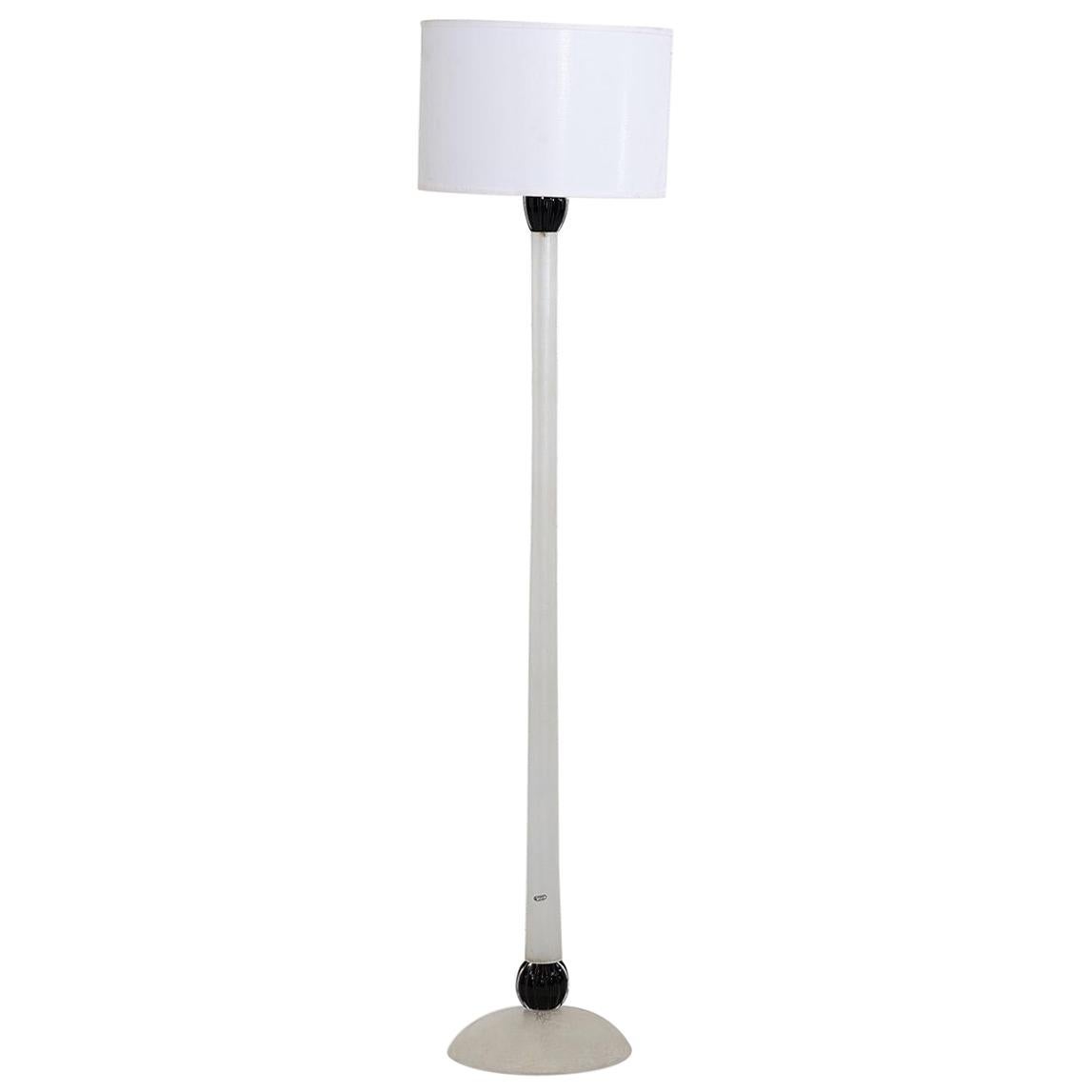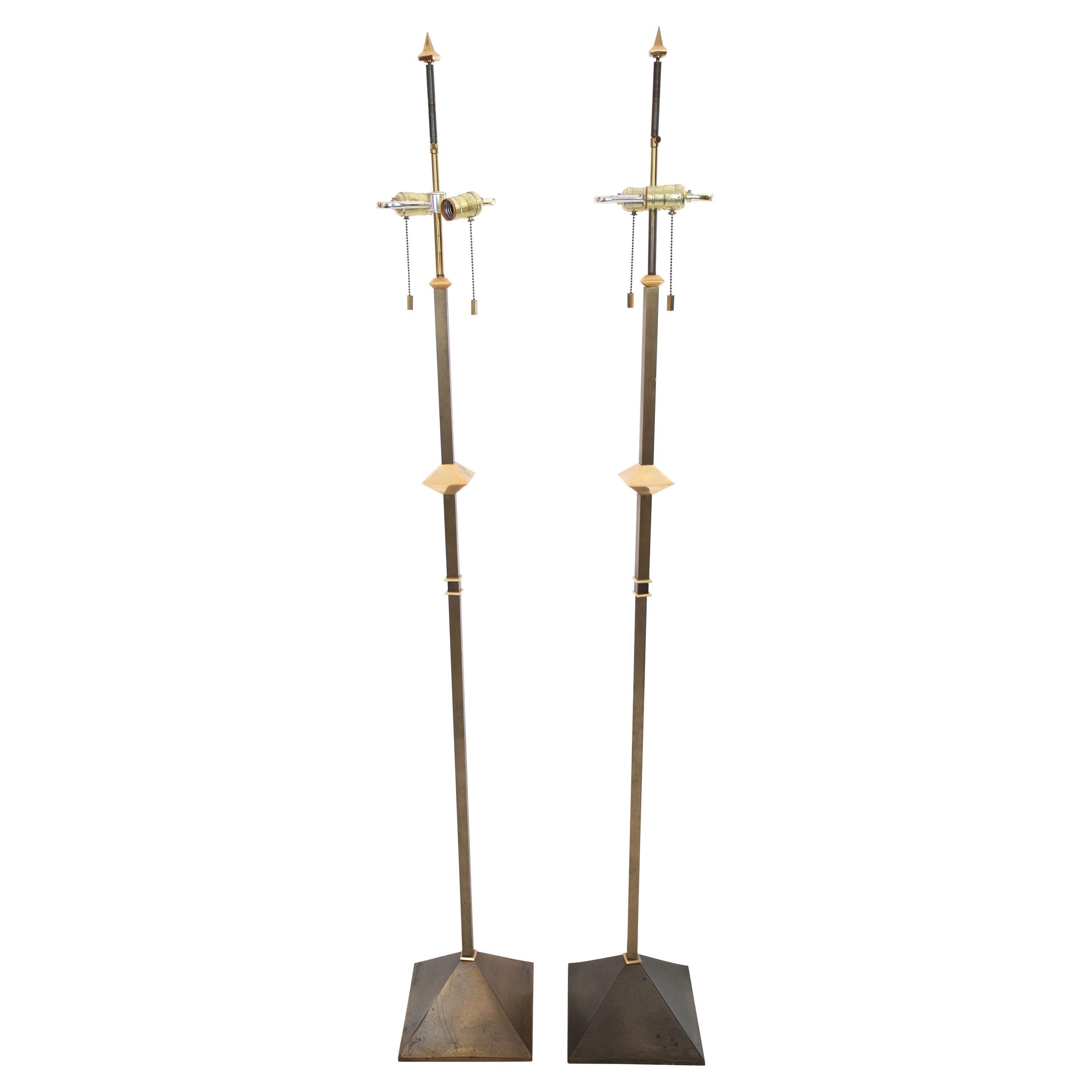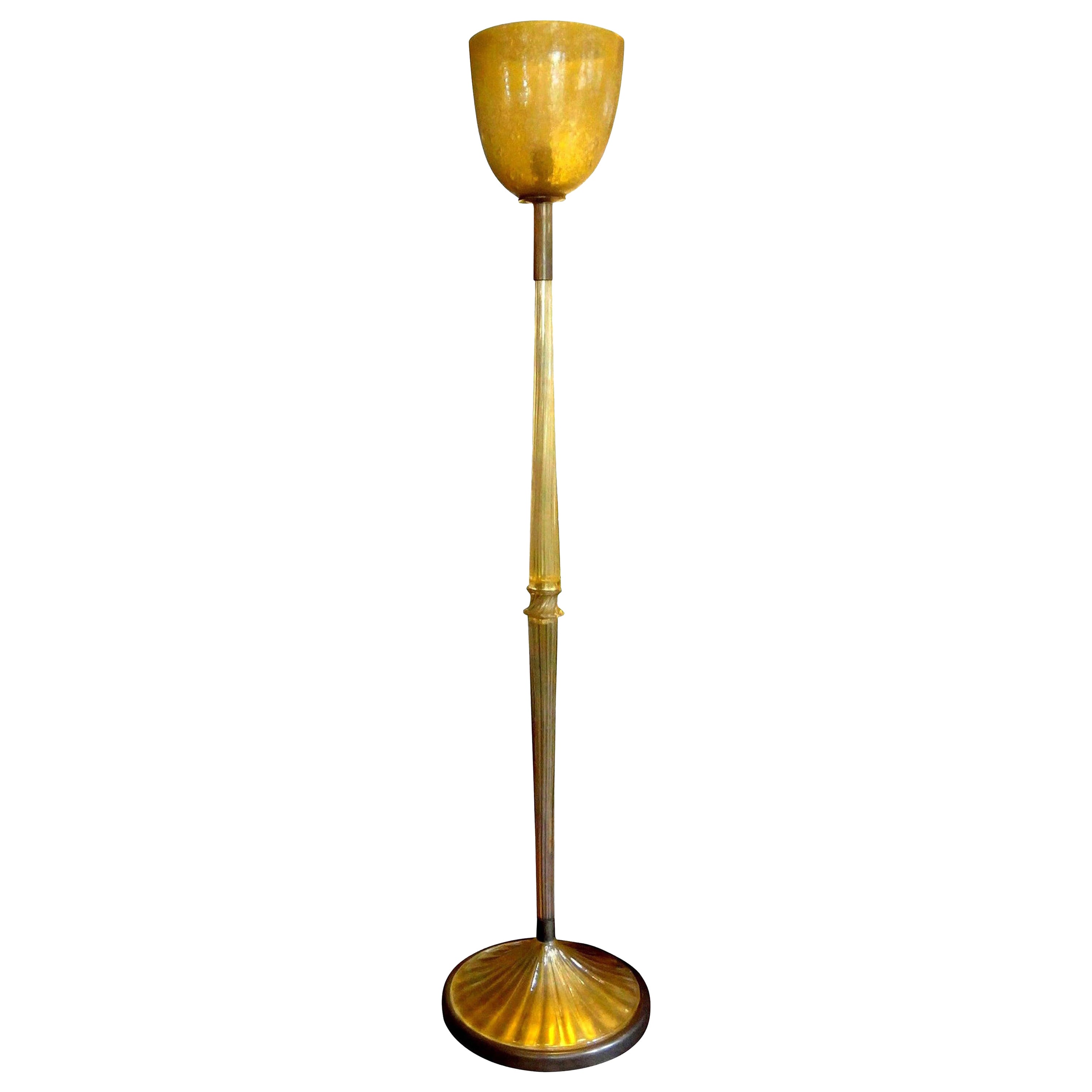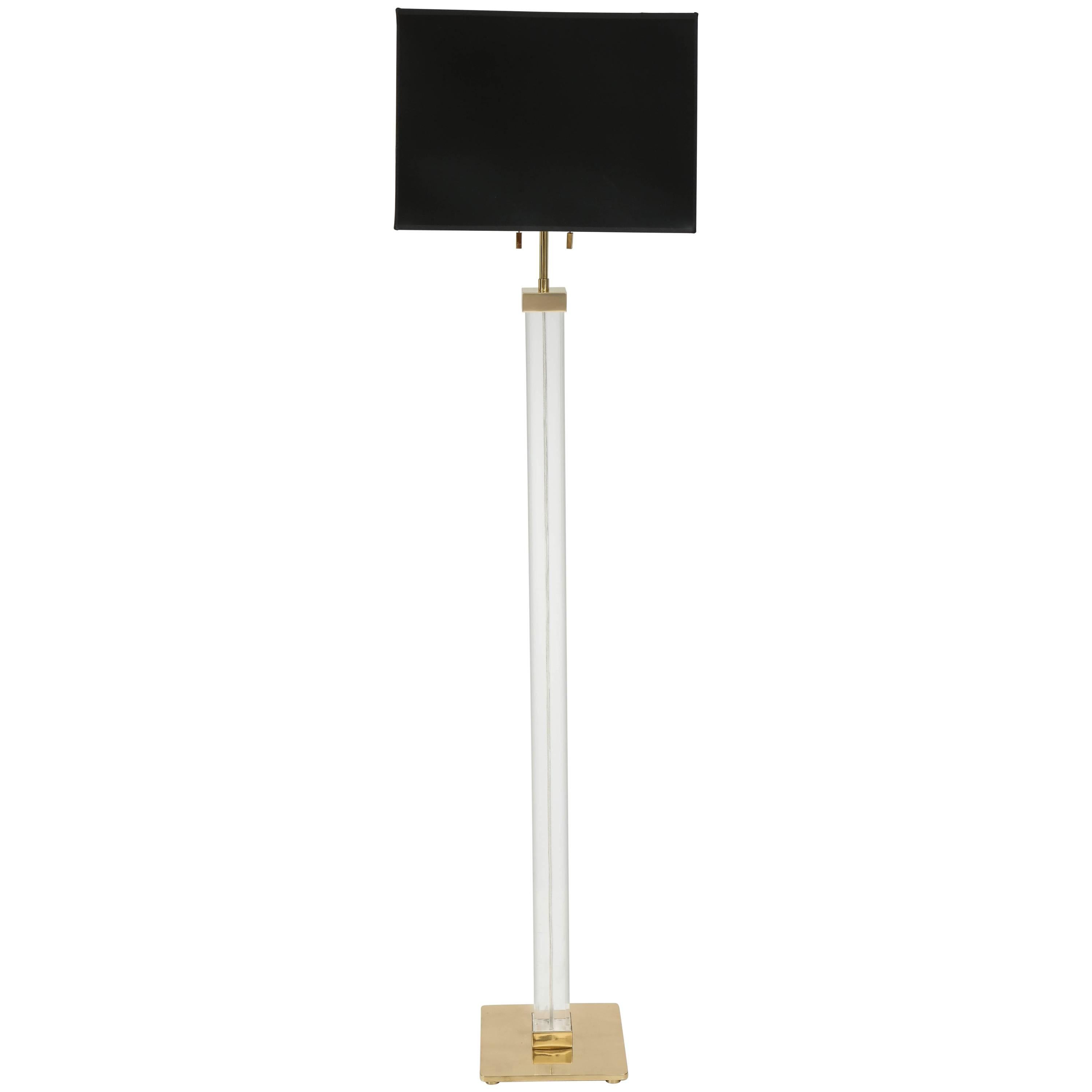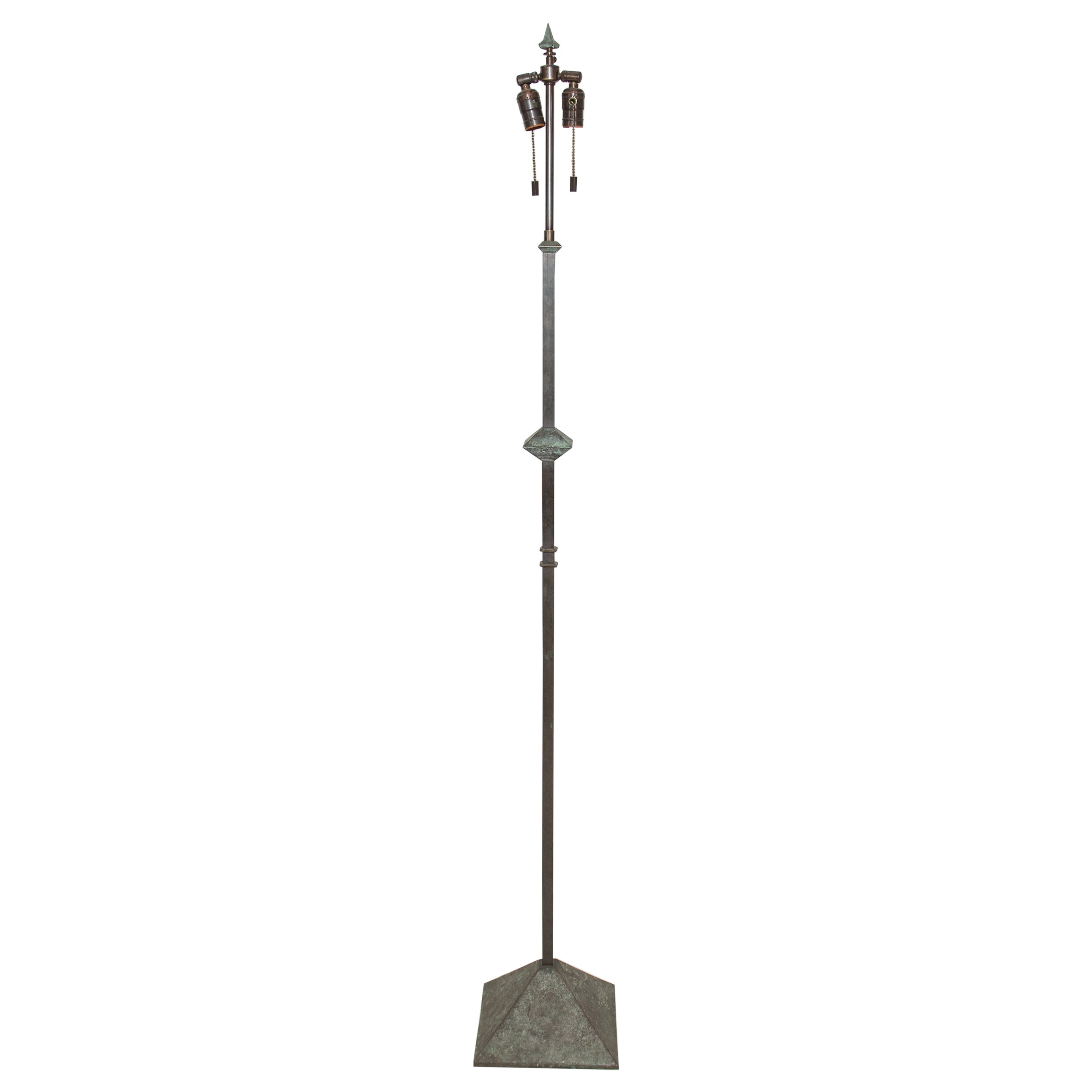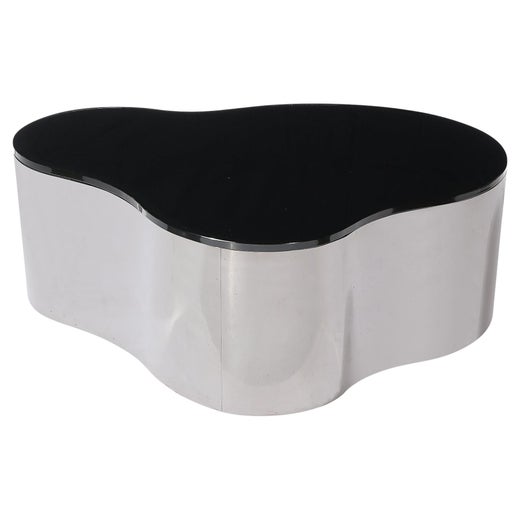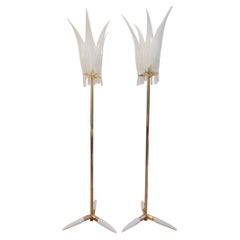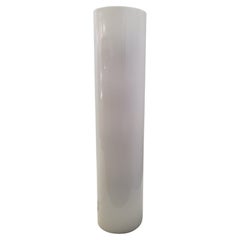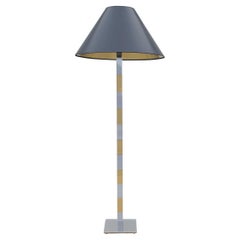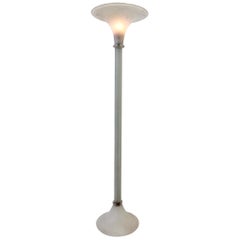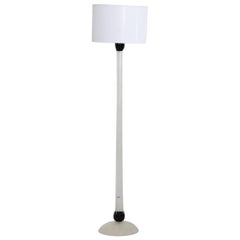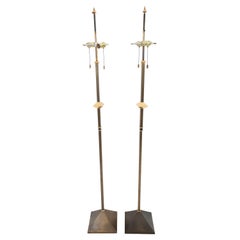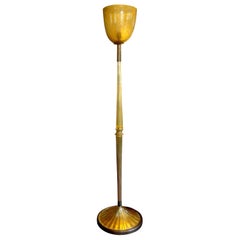Karl Springer for Seguso Murano Glass Torchère Floor Lamp
About the Item
- Creator:Karl Springer (Designer),Seguso Vetri d'Arte (Maker)
- Dimensions:Height: 67.5 in (171.45 cm)Diameter: 19 in (48.26 cm)
- Power Source:Plug-in
- Style:Modern (Of the Period)
- Materials and Techniques:
- Place of Origin:
- Period:
- Date of Manufacture:1980s
- Condition:Wear consistent with age and use. no chips, dings, or cracks.
- Seller Location:Middlesex, NJ
- Reference Number:1stDibs: LU1080437076212
Karl Springer
The Berlin-born, New York–based designer Karl Springer brought a chic, high-fashion sensibility to his coffee tables, mirrors, Lucite lamps and other furnishings. During his heyday in the 1970s, Springer’s work was a favorite of the glamour set, who enjoyed the novelty of pieces finished in rich and striking materials that ranged from exotic hides and skins to lacquer and chromed metal.
In a sense, Springer was a pre-postmodernist. Much as the dull, safe, corporate sameness of late 20th-century modernism prompted Ettore Sottsass, Michael Graves and others to explore new and provocative structures and materials in design and architecture, so, too, was Springer driven to enliven his creations with fresh and alluring energy and sleekness.
Springer came to New York in the late 1950s and found work arranging window displays at the department store Lord & Taylor. He had studied bookbinding in Germany, and, using his meticulous skills, he began crafting desk accessories wrapped in leather as a sideline. These pieces were sold in luxury stores like Bergdorf Goodman and drew a sophisticated clientele that included the Duchess of Windsor.
By 1965, Springer had established his own Manhattan atelier. It was Pierre Scapula, decorator to Jackie and Aristotle Onassis, who spotted Springer's disco-era Onassis chairs — which didn't yet have a name — first commissioned for a private residence in Acapulco, on the floor of the designer’s East 61st Street showroom. Jackie ordered barstools for the couple’s yacht, the Christina O, and dining chairs for their house on the Greek mainland.
At the time of his death, Springer had showrooms as far afield as Los Angeles, Tokyo and Munich.
The chairs, tables, credenzas and other furniture forms Springer created are generally simple, but substantial, and often have robust, rounded lines. The appeal of his work lies in Springer's insistence on exacting construction and, above all, his eye for unusual materials and finishes.
Springer employed Lucite, brass, and gunmetal along with chromed and polished steel, and revived exquisite finishes rarely seen since the days of Art Deco masters such as Émile-Jacques Ruhlmann and Jean-Michel Frank: shagreen (a type of sharkskin), python, goatskin, bone, horn, and lacquered parchment, as well as fabrics that include batik prints. Made of such materials, Springer’s work is by its very nature flamboyant and eye-catching: a suite of pieces will astonish, and an artfully placed side table in exotic hide will add a surprising spark.
Find a collection of vintage Karl Springer furniture today on 1stDibs.
Seguso Vetri d'Arte
Members of the Seguso family have been leading figures in the manufacture of glass on the Venetian island of Murano since the late 1300s, but for most collectors of vintage design the name evokes two companies formed in the first half of the 20th century. Seguso Vetri d’Arte, born from a small consortium of master glass artisans that included Archimede Seguso (1909–99), thrived under the artistic directorship of Flavio Poli (1900–84), a designer with an eye for modern forms, color and pattern. Vetreria Archimede Seguso, meanwhile, was founded in 1946, when Seguso opened his own atelier in order to employ classical techniques in the making of modern glassware.
The owners of Seguso Vetri d’Arte were justly proud of their skills as craftsmen, but they were not worldly aesthetes — and they knew it. Poli had studied at the Art Institute of Venice, originally working in ceramics before switching mediums and taking up the art of glass. He introduced new simple forms to the genre — the best known of his designs being the Valva, which resembles a clamshell in profile — and employed several novel techniques such as corroso, which gives glass a rough, emery-board-like finish. Poli’s most collectible works are his sommerso pieces, made with a layering process in which clear and colored-glass vessels are “submerged” within one another, producing a kind of nesting-doll effect in striking, elegant vases with bands of separate and overlapped hues.
At his eponymous workshop, Archimede Seguso often favored highly decorative, age-old techniques employed with modern restraint. His layered-glass Losanghe vessels have the look of an abstract checkerboard while his free-form Merletto vases have delicate, lacy patterns created by painstakingly twisting two heated glass straws to create helixes around the walls of the piece.
Though different in their scope and mission, both of these furnaces bearing the Seguso name created some of the most beautiful, alluring and exquisitely crafted works in all of modern design.
- ShippingRetrieving quote...Shipping from: Middlesex, NJ
- Return Policy
More From This Seller
View All20th Century Italian Mid-Century Modern Floor Lamps
Brass
20th Century American Mid-Century Modern Floor Lamps
Metal
20th Century Italian Mid-Century Modern Floor Lamps
20th Century American Mid-Century Modern Floor Lamps
Brass, Chrome
20th Century American Mid-Century Modern Floor Lamps
Brass
20th Century American Mid-Century Modern Floor Lamps
Metal, Chrome
You May Also Like
Vintage 1980s Italian Modern Floor Lamps
Murano Glass
Vintage 1980s Italian Post-Modern Floor Lamps
Glass
Vintage 1970s American Floor Lamps
Brass
Vintage 1930s Italian Art Deco Floor Lamps
Glass
20th Century American Modern Floor Lamps
Brass
Vintage 1970s American Floor Lamps
Bronze

